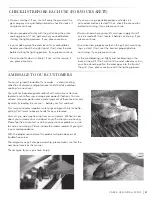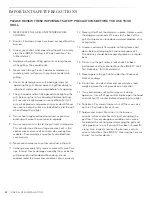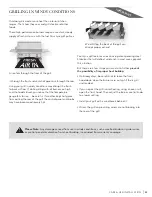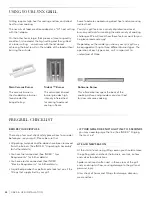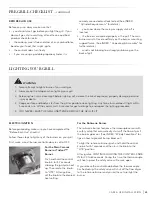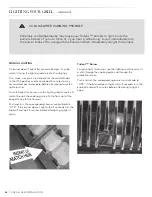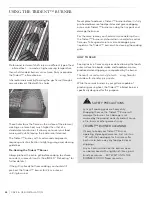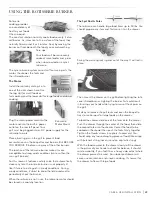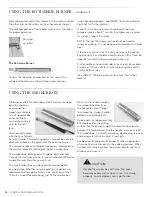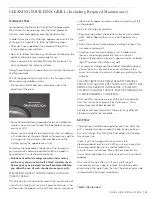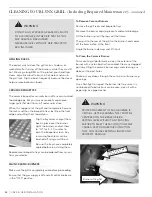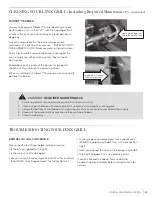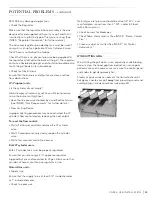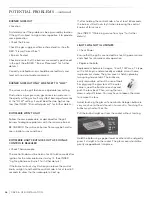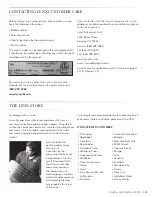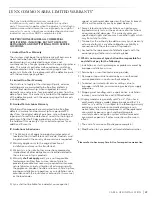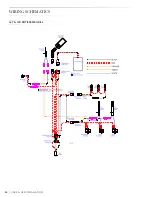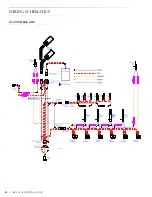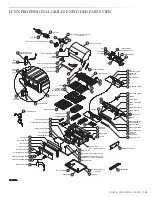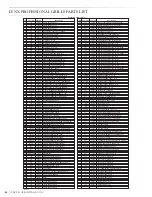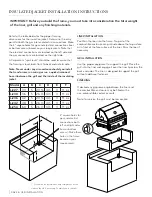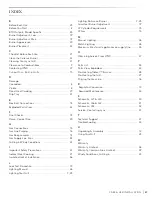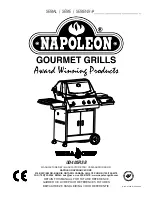
CARE & USE/INSTALLATION
|
35
REPLACE any damaged supply lines.
• Check the Regulator
Make sure that the regulator & hose assembly is the one
designed for and supplied with your Lynx grill and that it
is correctly set up for the type of fuel you are using. (See
INDEX: “Regulator Conversion” for further details.)
The hose and regulator provided by Lynx must be used if
your grill is set-up for a portable LP Gas Cylinder. Ensure
the LP hose is not behind the firebox.
Check that there is no physical pressure being applied to
the regulator attached to the back of the grill. The regulator
contains a flexible diaphragm and should not be allowed to
touch the grill body or its surroundings.
• Check for Obstructions
Ensure that the burners and drip tray are clean and free
from obstructions.
LP (Propane) units:
• Is the cylinder almost empty?
Almost-empty cylinders may not have sufficient pressure
to run the burners at high heat.
• Have the line pressure checked by a qualified technician
(See INDEX: “Gas Requirements” for further details.)
• Flow Limiting Device
Improper lighting procedures may have activated the LP
cylinder’s flow control device, reducing the heat output.
To reset the flow control:
• Shut off all burner controls and close the LP cylinder
valve.
• Wait 30 seconds and, very slowly, reopen the cylinder
valve.
• Wait a few seconds and relite a burner.
Bulk LP cylinder users:
Bulk LP cylinder lines must be properly regulated.
Ensure that you are using a 4/11 appliance regulator
supplied by Lynx and converted to LP gas. Also ensure that
you do not have more than one regulator in line.
Natural Gas units:
• Supply Line
Ensure that the supply line is at least 3/4” inside diameter
or 1” outside diameter.
• Check line pressure
Natural gas inlet pressure should be at least 5” W.C. and
manifold pressure not less than 4” W.C. under full load
(with all burners on.)
• Check burners for blockages.
• Check flame characteristics. (See INDEX: “Flame, Correct
Size” )
• Clean or adjust air shutter (See INDEX: “Air Shutter
Adjustment.”
WIND HITTING GRILL
Wind hitting the grill while in use, especially winds blowing
into or across the hood gap from behind, can cause poor
performance and in some cases can cause the control panel
and knobs to get dangerously hot.
Steady or gusty winds can prevent the normal exhaust of
hot gases. Locate your grill
away
from prevailing winds and
avoid grilling in windy conditions (see page 23).
POTENTIAL PROBLEMS
...
continued
Summary of Contents for L27R-3
Page 1: ...CARE USE INSTALLATION MAKE THE MOST OF YOUR ...
Page 2: ......
Page 40: ...40 CARE USE INSTALLATION L27 L30 ROTISSERIE GRILL WIRING SCHEMATICS ...
Page 41: ...CARE USE INSTALLATION 41 L36 L42 ROTISSERIE GRILL WIRING SCHEMATICS ...
Page 42: ...42 CARE USE INSTALLATION L54 ROTISSERIE GRILL WIRING SCHEMATICS ...

